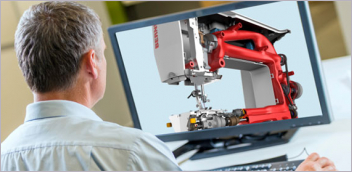Sustainability Still Elusive in Product Design
While sustainability pledges gain momentum, CIMdata research finds few companies ready to translate goals in greener product designs.
Latest News
April 28, 2023
Climate change, green energy, and corporate ESG targets—all hot button issues among the C-suite that are now filtering down to product development and engineering circles to manifest as critical design goals.
With the world on pace to reach 2.8 ° C warmer than the pre-industrial period, corporate net-zero emissions pledges are gaining momentum. However, recent CIMdata research shows most enterprises still don’t understand how to reduce their carbon footprint, let alone what it takes to design and develop greener products. “There’s a growing awareness of the green energy transition, but reality is setting in,” said Mark Reisig, sustainability & green energy practice director at CIMdata, in a recent webinar entitled “Meeting Sustainability and Green Energy Objectives: An Industrial Perspective.” “Many companies have big ambitions, but they need help.”
In its Green Energy Transition and Sustainability Survey, CIMdata found companies are gearing up to meet a sustainability agenda, including publishing ESG reports and empowering central teams. More than half (57%) of the companies surveyed have committed to a net zero target by 2050 with a smaller percentage (32%) aiming for the same goal by 2030.
At the same time, however, the results show sustainability has yet to rise to the strategic transformation level, indicating still weak adoption. The CIMdata research found 68% of respondents characterizing their companies as average or lagging when it comes to a sustainability agenda when compared to others in their own industry. Only 22% of those surveyed said sustainability was part of their corporate culture—another sign that efforts are lagging behind stated ambitions. “Companies that are well intentioned end up greenwashing or exaggerating claims because they aren’t making progress,” Reisig explained in the webinar. “A consistent strategy is lacking.”
When it comes to the product carbon footprint (PCF), a key element for improving sustainability, companies are definitely in early stages, CIMdata found. Approximately 80% of the environmental impact of a product is locked in during the design phase. Most companies lack visibility into their supply chain during the design phase, which is where most of the carbon is embodied in both parts and materials, CIMdata said. The CIMdata research found that slightly more than a quarter (28%) of design engineers at responding companies have access to their supply chain partners’ PCF.
Those that are calculating PCF are focused on manufacturing and processing, transportation, and raw materials extraction as opposed to calculating their carbon contributions, CIMdata research found. The vast majority of respondents are not designing with end of life considerations in mind (under 20%), which is a non-starter for successful implementation of sustainable product design, Reisig said.
The three most essential tools for achieving sustainability objectives are PLM and supply chain software, both cited by 46% of respondents, followed by cost and PCF assessment, at 41%.
PLM can foster sustainable design practices, including helping companies measure PCF as well as design for sustainability and a circular economy right from the start. Just like past PLM initiatives, Reisig said designing for sustainability is a people, process, and technology issue that demands a systematic approach. PLM, in tandem with SCM platforms, can be leveraged to deliver supply chain visibility, digital thread functionality, and robust digital twin capabilities—all of which help drive initiatives such as lighweighting and design for reassembly, reuse, and recycling.
“Historically, we’ve been designing for manufacturability, there are cases for design for quality, and now we’re transitioning to design for sustainability,” he said. To do so requires embracing design practices that have a net zero carbon footprint with no waste as well as end-of-life considerations. “We have to think about how products are going to be reused or components refurbished,” and PLM can help,” Reisig said.
Watch this video for the highlights of CIMdata’s new sustainability survey.
More CIMdata Coverage
Subscribe to our FREE magazine, FREE email newsletters or both!
Latest News
About the Author
Beth Stackpole is a contributing editor to Digital Engineering. Send e-mail about this article to DE-Editors@digitaleng.news.
Follow DE





